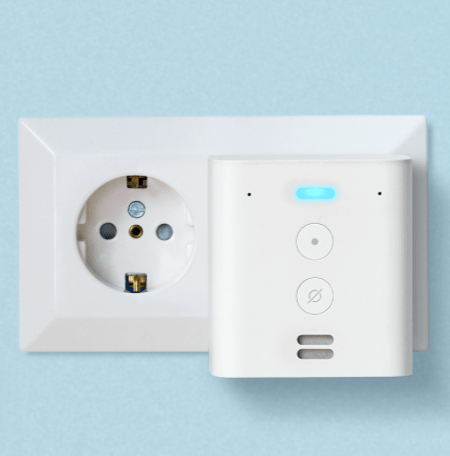

Once you have a router that can support the 2.4GHz band, you can then buy any of the standard smart plugs on the market. This would not only allow for support of the more common 2.4GHz smart devices but also retain the benefits of the faster 5GHz band for suitable devices.
Alexa wall plug full#
If a full replacement isn't practical, an alternative option would be to add an additional dual-band router to your existing network setup. So, it might be worth considering a change to your current router. Since a majority of smart devices operate on the 2.4GHz Wi-Fi band, if you are serious about using smart home technology, you'll need a router that supports this frequency. Option 2: Change your Wi-Fi Router or add an additional dual-band Router to your network Once you have your Zigbee smart plug and your Amazon Echo 4 (or any other Zigbee hub), you can connect them directly without needing to worry about your Wi-Fi frequency band. Check out my guide on Zigbee smart plugs here. With this in place, you could then purchase a Zigbee smart plug. The Amazon Echo 4, amongst other hubs, comes with built-in Zigbee compatibility. Zigbee is a wireless communication protocol commonly used in smart home devices ( I've written a full guide on Zigbee here). Option 1: Utilize a Zigbee Hub like the Amazon Echo 4th Gen and a Zigbee Smart PlugĪn alternative to finding a 5GHz smart plug is to use a Zigbee hub, such as the Amazon Echo 4. Alternatives to 5GHz Smart Plugsįrom researching this article, I've listed a few alternative approaches to consider.

However, similar to 5GHz, its range is limited and it is less capable of penetrating solid objects. The 6GHz band, introduced with Wi-Fi 6E in 2021, offers even faster speeds and more available channels than the 5GHz band, providing more bandwidth and less congestion. However, its range is shorter compared to the 2.4GHz band, and it is less effective at penetrating obstacles. On the other hand, the 5GHz band is less congested and can provide faster data transmission rates due to its higher frequency. However, this band tends to be crowded, since many devices including microwaves and cordless phones also operate on this frequency, leading to interference and slower speeds. It also has better range and is able to penetrate walls and other obstacles more effectively than higher frequencies. The 2.4GHz band is the most commonly used frequency as it is supported by nearly all wifi-enabled devices. Difference between 2.4GHz, 5GHz and 6GHz Frequencies So this Broadlink smart plug may not work with newer routers that operate on these newer standards. The 802.11ac and 802.11ax Wi-Fi standards were introduced in 20 respectively and offer much faster data rates. It also operates on the older 802.11.b/g/n standard which was the first version of the Wi-Fi standard to support 5GHz. Unfortunately, as of the time of writing it has been out of stock for the last 5 months and has possibly been discontinued. Other 5GHz Smart Plugs Broadlink Smart Plug Miniĭespite hours of research, the only other 5GHz smart plug I could find was this one from Broadlink. Some users found it a little difficult to set up.That said, you may have to find a clever way to hide the power cable.
Alexa wall plug plus#
You can position it between two common areas and, potentially, double its range or usefulness.īest of all, it can serve as a sort of showcase for one of the coolest All that you have to do is to launch the app, go to devices, click the plus icon, and then add the smart plug. It also means you can get a little more creative with where you put the Echo in your home. With the Echo up off a counter top or table, it will be more difficult for obstructions (other than the wall, of course) to pile up around it. Plug it in, let it boot and you can resume using it how you're used to. Your Echo should slide right into the bracket. Line up the bracket on the wall with the sheetrock anchors or drill marks and, using a drill, screw the included screws into the sheetrock anchors or the marked spots.If you're mounting directly to a stud, drilling pilot holes isn't necessary.Push the sheetrock anchor into each hole.Remove the bracket from the wall and, using the recommended drill bit size for your mount kit, drill a pilot hole into the sheetrock at each marked spot.If you're mounting the bracket to sheetrock:.Use a pencil to mark the position of the drill holes.Use a level to ensure the bracket is straight.Hold the empty bracket up to the wall in the position you want to mount it.


 0 kommentar(er)
0 kommentar(er)
